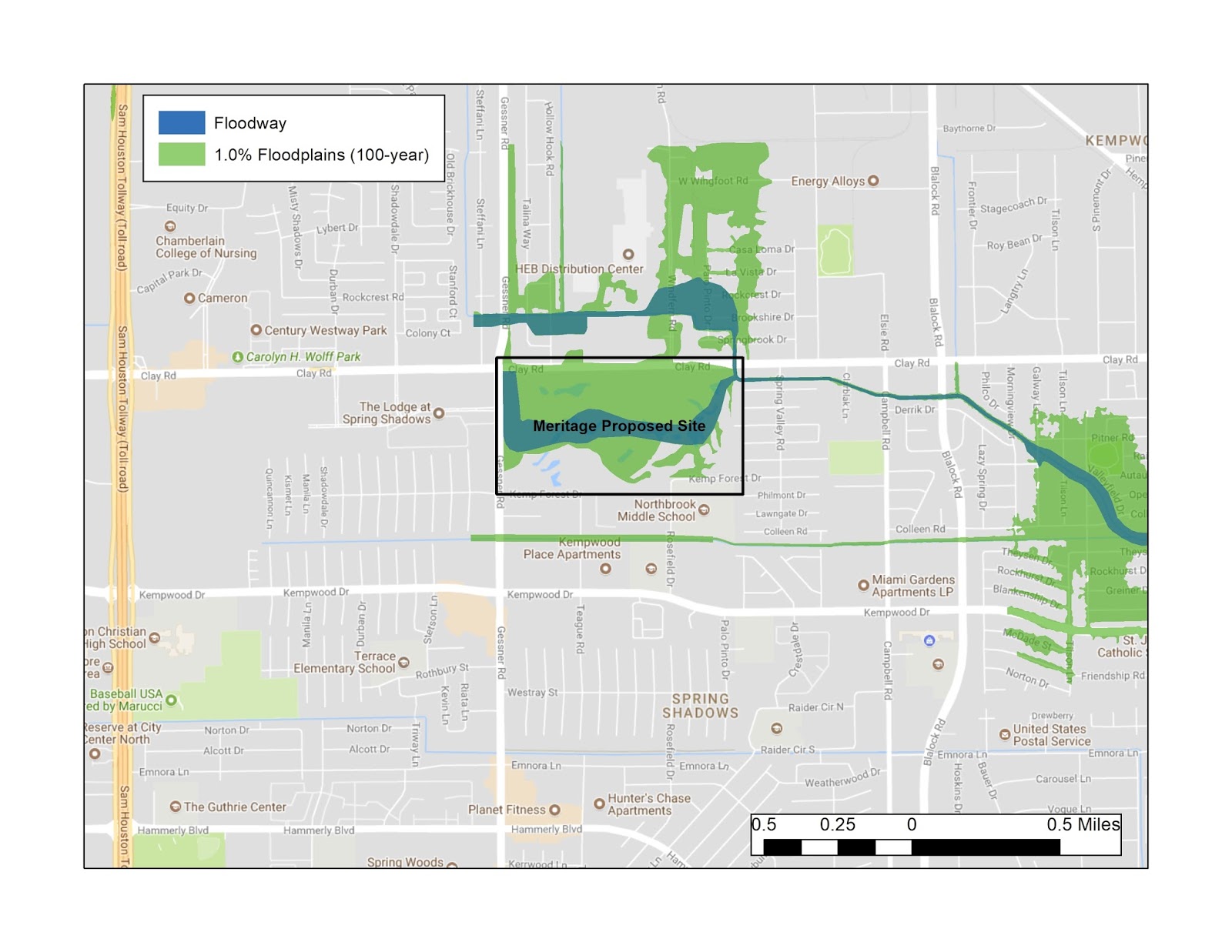Development has routinely been allowed in floodways
An article in today's Houston Chronicle by Mark Collette and Mike Dempsey (refer to link below) describes how construction of homes in floodways has frequently been allowed to proceed against expert advice.
Floodways are the areas with the highest risk for flooding damage. They consist of the channel of a river or stream, plus the adjacent land needed to carry away floodwaters. The floodway has some of the fastest-moving water during a flood. The floodways are often bordered by the 100-year flood hazard zones.
The article highlights an example from northwest Houston, where Meritage Homes has proposed to build homes on a 151-acre site on Brickhouse Gully, 2 miles east of the Addicks Reservoir (see map #1). Harris County and the City of Houston have previously bought out more than 30 homes due to repetitive flood losses and are in the process of buying 15 more.
The Meritage site is also an abandoned golf course, setting up an interesting contrast with the Exploration Green project of Clear Lake City (CLC) on the land formerly occupied by Clear Lake Golf Club. The Exploration Green site was also originally proposed for housing development but a coalition of local residents and the Clear Lake City Water Authority (CLCWA) was able to stop construction plans and eventually proceed with the Exploration Green storm water detention / greenbelt project (see December 9, 2017 blog post for more information).
The article states that in Harris County approximately 20,000 buildings are in or along floodways. About 75% of those were constructed before 1985, before the regulations governing construction in 100-year floodplains based on the Flood Insurance Risk Map (FIRM) program went into effect.
In Clear Lake City there are 23 homes in floodways, mostly in Bay Pointe and also in Northfork (see map #2).
Many other homes in these and other Clear Lake City neighborhoods are located partially in floodways or immediately adjacent to them. All Bay Pointe and Northfork homes were built after 1985, so they meet or exceed the requirement that the level of the lowest floor must be 12 inches above the Base Flood Elevation (BFE). Flooding damage that actually occurred during Harvey was certainly mitigated by these construction standards but also by other factors such as the depth and width of the floodways, especially if they were improved by CLCWA.
CLC residents - are you are aware of the multiple homes located in and adjacent to floodways? If you live in or near these homes are there local factors that act to reduce or prevent floodwater damage?
The article states that in Harris County approximately 20,000 buildings are in or along floodways. About 75% of those were constructed before 1985, before the regulations governing construction in 100-year floodplains based on the Flood Insurance Risk Map (FIRM) program went into effect.
In Clear Lake City there are 23 homes in floodways, mostly in Bay Pointe and also in Northfork (see map #2).
Many other homes in these and other Clear Lake City neighborhoods are located partially in floodways or immediately adjacent to them. All Bay Pointe and Northfork homes were built after 1985, so they meet or exceed the requirement that the level of the lowest floor must be 12 inches above the Base Flood Elevation (BFE). Flooding damage that actually occurred during Harvey was certainly mitigated by these construction standards but also by other factors such as the depth and width of the floodways, especially if they were improved by CLCWA.
CLC residents - are you are aware of the multiple homes located in and adjacent to floodways? If you live in or near these homes are there local factors that act to reduce or prevent floodwater damage?





Comments
Post a Comment